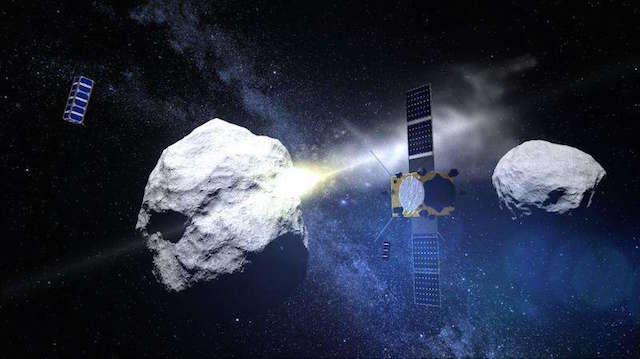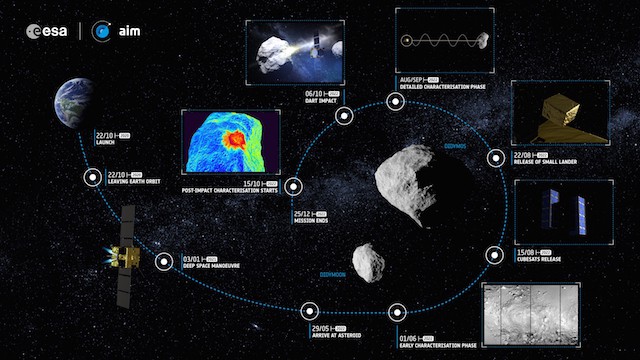The AIDA (Asteroid Impact & Deflection Assessment) mission will send a pair of spacecraft - the ESA-led Asteroid Impact Mission (AIM) and NASA-led Double Asteroid Redirection Test (DART) – to rendezvous with the Didymos asteroid and its small natural satellite, known as ‘Didymoon’.

Following a period of study of both asteroids and detailed mapping of Didymoon by AIM, DART will impact with Didymoon and AIM will assess the mission’s effectiveness in diverting the moon’s orbit around Didymos. The AIDA mission is being discussed at the European Planetary Science Congress (EPSC) 2015 in Nantes, France.
Patrick Michel, the lead of the AIM Investigation Team, said, “To protect Earth from potentially hazardous impacts, we need to understand asteroids much better – what they are made of, their structure, origins and how they respond to collisions.
“AIDA will be the first mission to study an asteroid binary system, as well as the first to test whether we can deflect an asteroid through an impact with a spacecraft.
“The European part of the mission, AIM, will study the structure of Didymoon and the orbit and rotation of the binary system, providing clues to its origin and evolution. Asteroids represent different stages in the rocky road to planetary formation, so offer fascinating snapshots into the Solar System’s history.”

AIM is due for launch in October 2020 and rendezvous with Didymos in May 2022. Binary systems are said to make up around 15% of the asteroid population. Egg-shaped Didymoon (about 160m in diameter) orbits the diamond-shaped Didymos asteroid (about 750m in diameter) every 12 hours at an altitude of 1.1km. Ground-based observations show that Didymos is probably a common chondrite - or stony - asteroid.
AIM will measure Didymoon’s mass shape, density and dynamic properties and map the asteroid’s surface at visible and infrared wavelengths, as well as using radar to probe beneath the surface. It will deploy a small lander, MASCOT-2 (built by Germany’s DLR), in order to transmit and receive radio signals through Didymoon to investigate the internal structure.
In October 2022, AIM will move to a safe distance to observed DART’s impact with Didymoon and analyse the plume of material ejected. It will then resume its mapping and monitoring mission to study internal material revealed in the crater and any changes to Didymoon’s orbit.




Swiss geoengineering start-up targets methane removal
No mention whatsoever about the effect of increased methane levels/iron chloride in the ocean on the pH and chemical properties of the ocean - are we...